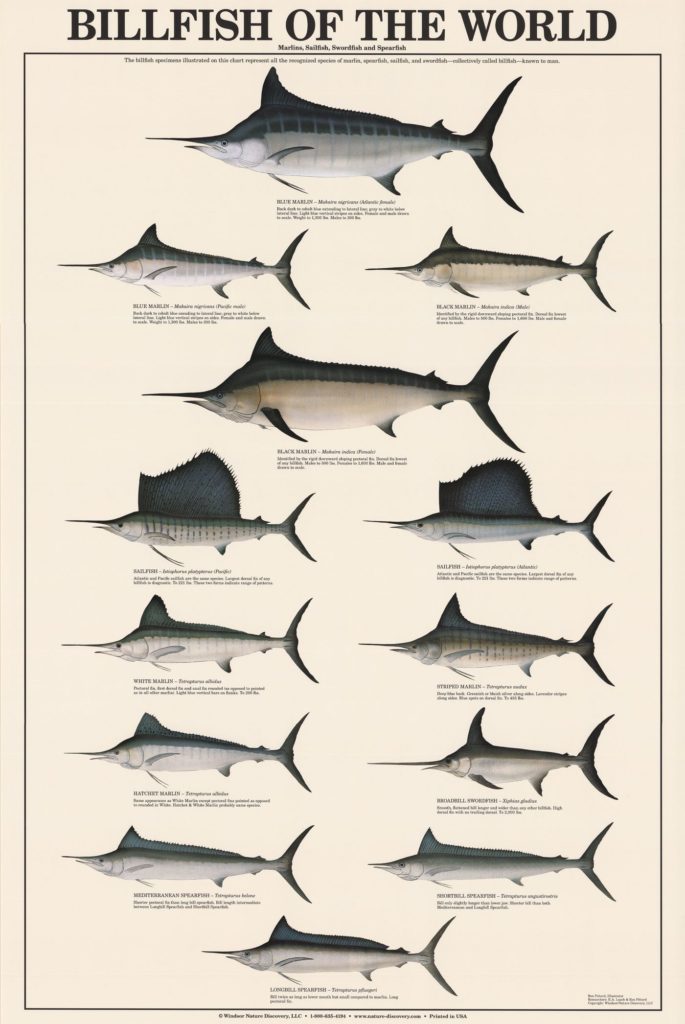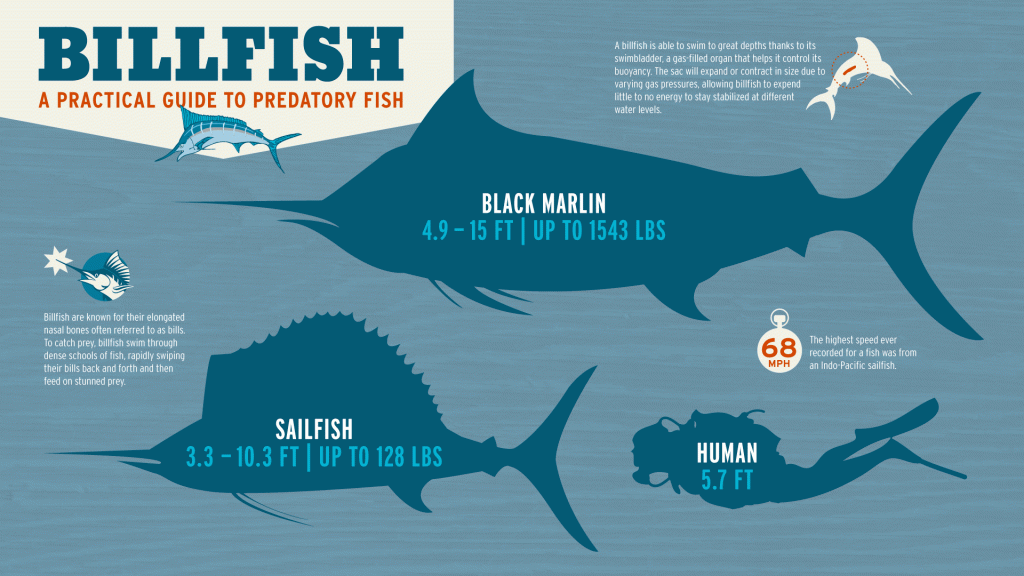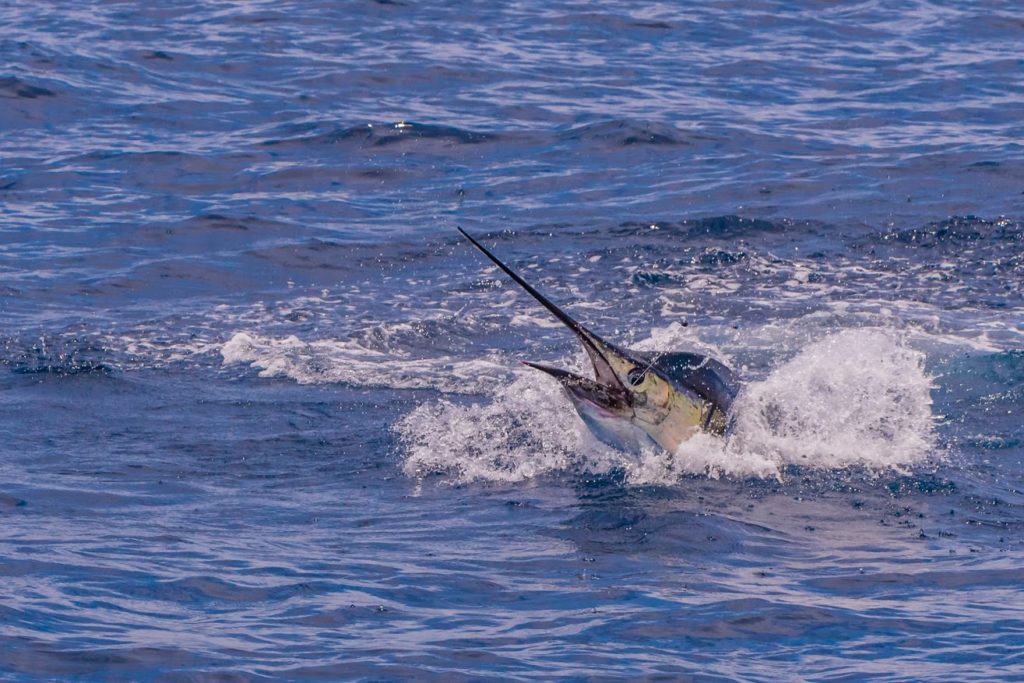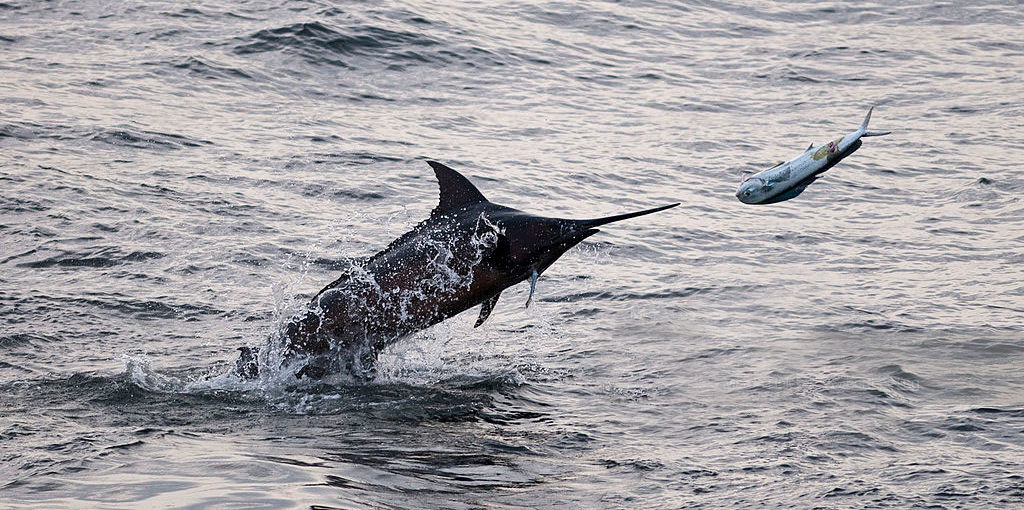Learn More About Billfish
Can I Catch Billfish in Costa Rica?
What are Billfish?
Billfish can be found in Costa Rica year round, and peek in various months depending on whether or not you are in the North, Central or South Pacific Coast of Costa Rica. Please ask your fishing lodge, or captain the best months to find these species in Costa Rica. It is illegal to remove a billfish from the water in Costa Rica, but don’t worry you can still take your photo with one while leaving the billfish safely in the water for release. Read this article by Todd Staley about why not to take billfish out of the water and the proper way to catch and release them. The most common billfish anglers release in Costa Rica are Sailfish, Pacific blue marlin, black marlin and striped marlin. Although other billfish such as swordfish and long billed spearfish can be found in Costa Rica, they are usually difficult to fish for due to the limited access to them. Read this article by Todd Staley on why Sailfish are worth more alive then dead to Costa Rica’s National and local economies.
The term billfish refers to a group of predatory fish characterised by prominent bills, or rostra, and by their large size; some are longer than 4 m (13 ft). Billfish include sailfish and marlin, which make up the family Istiophoridae, and swordfish, sole member of the family Xiphiidae. They are apex predators which feed on a wide variety of smaller fish, crustaceans, and cephalopods. These two families are sometimes classified as belonging to the order Istiophoriformes, a group with origins in the Late Cretaceous around 71 million years ago with the two families diverging from one and another in the Late Miocene around 15 million years ago.[3] However, they are also classified as being closely related to the mackerels and tuna within the suborder Scombroidei of the order Perciformes.[4] However, the 5th edition of the Fishes of the World does recognise the Istiophoriformes as a valid order, albeit including the Sphyraenidae, the barracudas.[5]

 Billfish are pelagic and highly migratory. They are found in all oceans,[6] although they usually inhabit tropical and subtropical waters; swordfish are found in temperate waters, as well. Billfish use their long spears or sword-like upper beaks to slash at and stun prey during feeding. Their bills can also be used to spear prey, and have been known to spear boats (probably accidentally), but they are not normally used in that way. They are highly valued as gamefish by sports fishermen.
Billfish are pelagic and highly migratory. They are found in all oceans,[6] although they usually inhabit tropical and subtropical waters; swordfish are found in temperate waters, as well. Billfish use their long spears or sword-like upper beaks to slash at and stun prey during feeding. Their bills can also be used to spear prey, and have been known to spear boats (probably accidentally), but they are not normally used in that way. They are highly valued as gamefish by sports fishermen.
Billfish are exploited both as food and as fish. Marlin and sailfish are eaten in many parts of the world, and many sport fisheries target these species. Swordfish are subject to particularly intense fisheries pressures, and although their survival is not threatened worldwide, they are now comparatively rare in many places where once they were abundant. The istiophorid billfishes (marlin and spearfish) also suffer from intense fishing pressures. High mortality levels occur when they are caught incidentally by longline fisheries targeting other fish.[55] Overfishing continues to “push these declines further in some species”.[56] Because of these concerns about declining populations, sport fishermen and conservationists now work together to gather information on billfish stocks and implement programs such as catch and release, where fish are returned to the sea after they have been caught. However, the process of catching them can leave them too traumatised to recover.[36] Studies have shown that circle fishing hooks do much less damage to billfish than the traditional J-hooks, yet they are at just as effective for catching billfish. This is good for conservation, since it improves survival rates after release.[57][58]
The stocks for individual species in billfish longline fisheries can “boom and bust” in linked and compensatory ways. For example, the Atlantic catch of blue marlin declined in the 1960s. This was accompanied by an increase in sailfish catch. The sailfish catch then declined from the end of the 1970s to the end of the 1980s, compensated by an increase in swordfish catch. As a result, overall billfish catches remained fairly stable.[59]

“Many of the world’s fisheries operate in a data poor environment that precludes predictions about how different management actions will affect individual species and the ecosystem as a whole.”[60] In recently years pop-up satellite archival tags have been used to monitor billfish. The capability of these tags to recover useful data is improving, and their use should result in more accurate stock assessments.[61] In 2011, a group of researchers claimed they have, for the first time, standardized all available data about scombrids and billfishes so it is in a form suitable for assessing threats to these species. The synthesis shows that those species which combine a long life with a high economic value, such as the Atlantic blue marlin and the white marlin, are generally threatened. The combination puts such species in “double jeopardy”.[62]
More Sport Fishing Articles From FECOP
[post-carousel-pro id=”5407″]






















